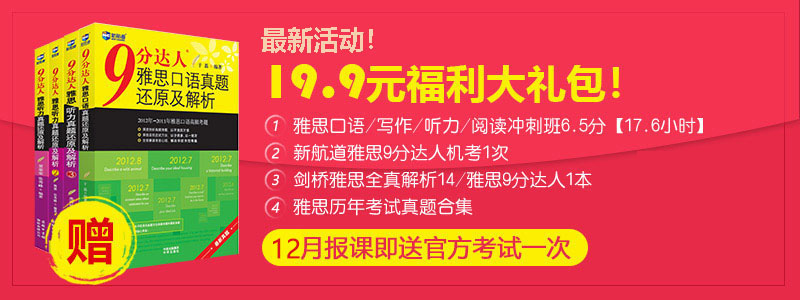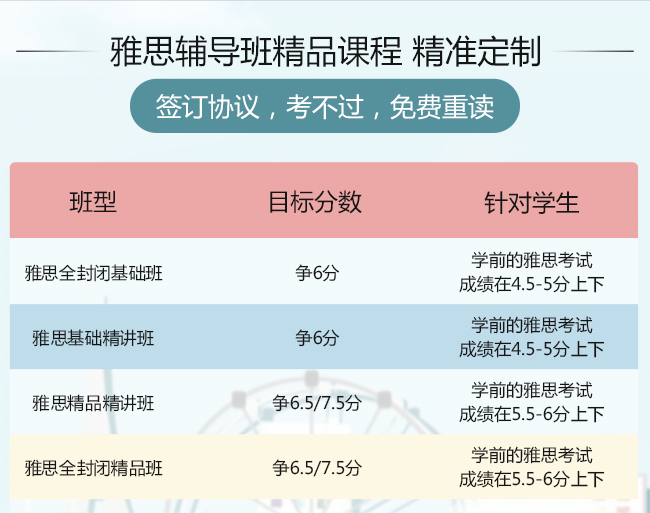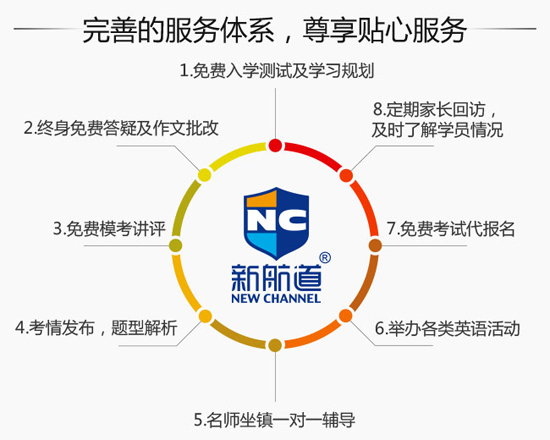2018-06-28 14:12来源:互联网作者:上海管理员
摘要:剑桥雅思13Test2阅读passage1真题+翻译Bringing cinnamon to Europe-桂皮入欧
剑桥雅思13Test2阅读passage1真题+翻译
READING PASSAGE 1
You should spend about 20 minutes on Questions 1-13, which are based on Reading Passage 1 below.
Bringing cinnamon to Europe
桂皮入欧
Cinnamon is a sweet, fragrant spice produced from the inner bark of trees of the genus Cinnamomum, which is native to the Indian sub-continent. It was known in biblical times, and is mentioned in several books of the Bible, both as an ingredient that was mixed with oils for anointing people's bodies, and also as a token indicating friendship among lovers and friends. In ancient Rome, mourners attending funerals burnt cinnamon to create a pleasant scent. Most often, however, the spice found its primary use as an additive to food and drink. In the Middle Ages, Europeans who could afford the spice used it to flavour food, particularly meat, and to impress those around them with their ability to purchase an expensive condiment from the ‘exotic’ East. At a banquet, a host would offer guests a plate with various spices piled upon it as a sign of the wealth at his or her disposal. Cinnamon was also reported to have health benefits, and was thought to cure various ailments, such as indigestion.
桂皮是用肉桂属树木的内层树皮做成的一种散发着香甜气味的香料,原产于印度次大陆。它早在圣经时代就己为人所知,圣经中也有数次关于它的记載,当时它既作为原料与油脂混合给身体涂油,也可以作为爱人和朋友间亲密的象征。古罗马时期,出席葬礼的人会点燃桂皮来散发香氛。然而桂皮最主要的用法还是作为食物和饮料的添加剂。中世纪时期,买得起桂皮的欧洲人会用桂皮给食物调味,特别是肉类,同时也向周围的人炫耀自已有财力买得起来自“神秘”东方的昂贵香料。在宴会上,主人会将堆满了各种香料的盘子献给客人们,以显示他/她有财可资挥霍。也有记栽说桂皮有医疗效用,可以用来治疗多种病症,如消化不良等。
Toward the end of the Middle Ages, the European middle classes began to desire the lifestyle of the elite, including their consumption of spices. This led to a growth in demand for cinnamon and other spices. At that time, cinnamon was transported by Arab merchants, who closely guarded the secret of the source of the spice from potential rivals. They took it from India, where it was grown, on camels via an overland route to the Mediterranean. Their journey ended when they reached Alexandria. European traders sailed there to purchase their supply of cinnamon, then brought it back to Venice. The spice then travelled from that great trading city to markets all around Europe. Because the overland trade route allowed for only small quantities of the spice to reach Europe, and because Venice had a virtual monopoly of the trade, the Venetians could set the price of cinnamon exorbitantly high. These prices, coupled with the increasing demand, spurred the search for new routes to Asia by Europeans eager to take part in the spice trade.
中世纪晚期时,欧洲的中产阶级渴求精英阶层的生活方式,包括他们享用的香料。这导致了对桂皮和多种其他香料需求量的增长。当时,桂皮是阿拉伯商人贩往欧洲的,他们对桂皮的来源严格保密,以防范可能的竞争对手。他们将桂皮从原产地印度买走,走陆路用骆驼运往地中海地区。他们的行程终点位于亚历山大。欧洲商人走水路抵达亚历山大,从他们手中买走桂皮,接着运往威尼斯。然后,这些香料又从这座贸易都市销往欧洲各地市场。由于通过陆路运输到欧洲的桂皮数量不大,以及威尼斯在桂皮交易上的将近垄断地位,威尼斯人将桂皮价格卖到天价。由于价格高昂,加上需求不断增长,想要在桂皮交易中分一杯羹的欧洲商人急于搜寻新的亚欧商路。
Seeking the high profits promised by the cinnamon market, Portuguese traders arrived on the island of Ceylon in the Indian Ocean toward the end of the 15th century. Before Europeans arrived on the island, the state had organized the cultivation of cinnamon. People belonging to the ethnic group called the Salagama would peel the bark off young shoots of the cinnamon plant in the rainy season, when the wet bark was more pliable. During the peeling process, they curled the bark into the ‘stick’ shape still associated with the spice today. The Salagama then gave the finished product to the king as a form of tribute. When the Portuguese arrived, they needed to increase production significantly, and so enslaved many other members of the Ceylonese native population, forcing them to work in cinnamon harvesting. In 1518, the Portuguese built a fort on Ceylon, which enabled them to protect the island, so helping them to develop a monopoly in the cinnamon trade and generate very high profits. In the late 16th century, for example, they enjoyed a tenfold profit when shipping cinnamon over a journey of eight days from Ceylon to India.
15世纪末期,看准了桂皮市场潜在的丰厚利润,葡蔔牙商人登上了印度洋上的岛国锡兰。在欧洲人抵达之前,该国已经有了组织化的桂皮收割。萨罗族人会在雨季从肉桂树的幼枝上剥下树皮,因为此时湿润的树皮更柔韧。在剥树皮的过程中,他们会把桂皮卷成小木棍状,这个做法浩用至今。萨罗人之后将桂皮当作贡品呈给国王。葡简牙人登陆后,需要大规模扩大生产,于是他们奴役了大批锡兰土著,强迫他们从事桂皮收割。1518年,葡牙人在锡兰建立要塞维持自己对岛屿的控制,帮助他们垄断桂皮贸易,获取高额收益。比如16世纪末,他们花8天时间走水路将桂皮从锡兰运往印度,就能坐收10倍的利润。
When the Dutch arrived off the coast of southern Asia at the very beginning of the 17th century, they set their sights on displacing the Portuguese as kings of cinnamon. The Dutch allied themselves with Kandy, an inland kingdom on Ceylon. In return for payments of elephants and cinnamon, they protected the native king from the Portuguese. By 1640, the Dutch broke the 150-year Portuguese monopoly when they overran and occupied their factories. By 1658, they had permanently expelled the Portuguese from the island, thereby gaining control of the lucrative cinnamon trade.
17世纪初期,荷兰人在南亚海岸登陆,意在取代葡萄牙在桂皮贸易中的霸主地位。他们与锡兰内地的王国康提结盟,以保护康提不受葡萄牙侵略为条件,换取大象及桂皮。直到1640年,荷兰在蹂躏并占领了葡萄牙人的桂皮工厂之后,终于打破了葡萄牙独霸150年的垄断地位。1658年,他们彻底赶走了葡萄牙人,因此完全控制了利润丰厚的桂皮贸易。
In order to protect their hold on the market, the Dutch, like the Portuguese before them, treated the native inhabitants harshly. Because of the need to boost production and satisfy Europe's ever-increasing appetite for cinnamon, the Dutch began to alter the harvesting practices of the Ceylonese. Over time, the supply of cinnamon trees on the island became nearly exhausted, due to systematic stripping of the bark. Eventually, the Dutch began cultivating their own cinnamon trees to supplement the diminishing number of wild trees available for use.
为了保护他们的市场地位,荷兰人与此前的葡萄牙人一样,对待当地人民异常残暴。为了提高产量以满足欧洲日益增长的桂皮需求,荷兰人开始改变锡兰人的耕种收割模式。不久,由于大规模地剥离树皮,该岛的肉桂树几近枯竭。最终,为了弥补可用的野生肉桂树的减少,荷兰人开始自己种植肉桂树。
Then, in 1796, the English arrived on Ceylon, thereby displacing the Dutch from their control of the cinnamon monopoly. By the middle of the 19th century, production of cinnamon reached 1,000 tons a year, after a lower grade quality of the spice became acceptable to European tastes. By that time, cinnamon was being grown in other parts of the Indian Ocean region and in the West Indies, Brazil, and Guyana. Not only was a monopoly of cinnamon becoming impossible, but the spice trade overall was diminishing in economic potential, and was eventually superseded by the rise of trade in coffee, tea, chocolate, and sugar.
接着,在1796年,英国人登陆锡兰,取代了荷兰人在桂皮贸易中的垄断地位。到19世纪中期,在欧洲人慢慢接受了一种质量等级较低的桂皮口味之后,桂皮的产量达到1000吨/年。至此,桂皮开始在印度洋其他部分和西印度群岛、巴西、圭亚那等地种植。这不仅让垄断桂皮交易的可能性化为泡影,也让桂皮的经济潜能全面下跌,最终被咖啡、茶叶、巧克力和糖类贸易的崛起所取代。
推荐:
上海新航道专注雅思教育14年,每120分钟就有一位高分学员来自新航道,加入新航道,实现高分梦!



免费领取最新剑桥雅思、TPO、SAT真题、百人留学备考群,名师答疑,助教监督,分享最新资讯,领取独家资料。
方法1:扫码添加新航道老师

微信号:shnc_2018
方法2:留下表单信息,老师会及时与您联系
| 课程名称 | 班级人数 | 课时 | 学费 | 报名 |
|---|---|---|---|---|
| 雅思入门段(A段)6-10人班 | 6-10人 | 80课时 | ¥18800 | 在线咨询 |
| 雅思冲刺段(C段)6-10人班 | 6-10人 | 72课时 | ¥26800 | 在线咨询 |
| 雅思全程段(B+C段)6-10人班 | 6-10人 | 192课时 | ¥45800 | 在线咨询 |
| 雅思精讲段(B段)6-10人班 | 6-10人 | 96课时 | ¥25800 | 在线咨询 |
| 雅思口语单项班 | 15-20人 | 按需定制 | ¥ | 在线咨询 |
| 课程名称 | 班级人数 | 课时 | 学费 | 报名 |
|---|---|---|---|---|
| 雅思强化段(C段)20-30人班 | 20-30人 | 96课时 | ¥8800 | 在线咨询 |
| 雅思精讲段(B段)20-30人班 | 20-30人 | 96课时 | ¥7800 | 在线咨询 |
| 雅思全程班(B+C段)20-30人班 | 20-30人 | 192课时 | ¥13800 | 在线咨询 |
| 课程名称 | 班级人数 | 课时 | 学费 | 报名 |
|---|---|---|---|---|
| 雅思强化段(C段)6-10人班住宿班 | 6-10人 | 152 | ¥28800 | 在线咨询 |
| 雅思全程班(A+B+C段)6-10人班住宿 | 6-10人 | 304课时 | ¥50800 | 在线咨询 |
| 雅思精讲段(B段)6-10人班住宿班 | 6-10人 | 152课时 | ¥29800 | 在线咨询 |
| 雅思入门段(A段)6-10人班(住宿) | 6-10人 | 80课时 | ¥20800 | 在线咨询 |
| 雅思3周特训住宿班 | 10 | 228 | ¥30800 | 在线咨询 |
| 课程名称 | 班级人数 | 课时 | 学费 | 报名 |
|---|---|---|---|---|
| 雅思强化段(C段)20-30人班住宿班 | 20-30人 | 96课时 | ¥8800 | 在线咨询 |
| 雅思全程段(A+B+C段)20-30人班住宿 | 20-30人 | 192课时 | ¥15800 | 在线咨询 |
| 雅思精讲段(B段)20-30人班住宿班 | 20-30人 | 96课时 | ¥9800 | 在线咨询 |
| 课程名称 | 班级人数 | 课时 | 学费 | 报名 |
|---|---|---|---|---|
| 雅思一对一 | 1人 | 按需定制 | ¥980元 | 在线咨询 |
| 雅思托福预备班 | 6-10人 | 50 | ¥9800 | 在线咨询 |
| 雅思免费试听课 | 不限 | ¥0元 | 在线咨询 | |
| 雅思口语5月新题刷题实战营 | ¥999 | 在线咨询 |
热门搜索: 上海雅思培训 上海雅思培训机构哪家好 上海雅思封闭班 上海雅思1对1培训 上海雅思培训
免责声明
1、如转载本网原创文章,请表明出处;
2、本网转载媒体稿件旨在传播更多有益信息,并不代表同意该观点,本网不承担稿件侵权行为的连带责任;
3、如本网转载稿、资料分享涉及版权等问题,请作者见稿后速与新航道联系(电话:021-64380066),我们会第一时间删除。
地址:徐汇区文定路209号宝地文定商务中心1楼
乘车路线:地铁1/4号线上海体育馆、3/9号线宜山路站、11号线上海游泳馆站
总部地址:北京市海淀区中关村大街28-1号6层601 集团客服电话:400-097-9266 总部:北京新航道教育文化发展有限责任公司
Copyright © www.xhd.cn All Rights Reserved 京ICP备05069206


 微信公众号
微信公众号
 微信社群
微信社群